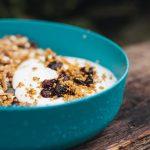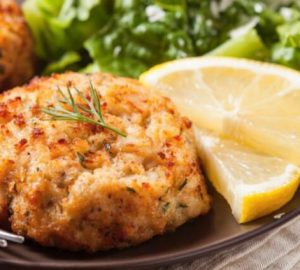Refuel, Rehydrate, Rebuild
Immediately after a hard training session or event, we all know that we can’t go on to perform to the same standard as we could when we were fresh. This is simply due to fatigue. To restore the capacity to perform, we need to ‘recover’. The term recovery refers to the hours and days after a hard training session, race or event where your body restores its ability to perform exercise to the same performance level as before, through a number of different processes.
In this article, we will focus on recovery from the perspective of optimal performance. Nutrition plays a key role in the recovery process; however, it is important that we also mention other factors such as sleep, concurrent activity or training and other stresses the body is under, which can all affect the speed of recovery. The toughness of a session will also have a big impact on the time it takes to recover, as the harder the session is, the longer it will take to bounce back.
The type of nutrients that we consume, the time that they are eaten, as well as their quality and quantity, all play a part in the recovery process. When we get all of these factors right through using proper ‘performance nutrition’, we can bounce back to our original performance level very quickly – or in the case of training, gain fitness through ‘super compensation’. On the other hand, if an athlete doesn’t eat the correct nutrients, delays feeding for too long after exercise, or simply doesn’t eat enough then we can refer to this as ‘substandard nutrition’ and this can compromise the recovery process and significantly delay the time it takes to restore performance to its original level.
The shorter the time frame between sessions, then the more important it is to ensure that the recovery process is optimised. Athletes competing in multiple races or training sessions on a single day, or long events on back to back days, where there is limited time between sessions, will notice significant performance benefits from ‘performance nutrition’. An intensive training camp is a classic example of where recovery between sessions is critical to prevent a significant drop in performance over the days of the camp. In contrast, if there are multiple rest days between training sessions or races, then the recovery process can be allowed to take longer without having a negative effect on performance.
The post exercise recovery process can be broken down into three key areas: refueling, rehydration and rebuilding.
Refueling
During intense exercise, particularly sessions where a large part of the session is spent out of breath, or when completing longer sessions (over one to two hours), the body’s carbohydrate stores in the form of muscle and liver glycogen will become significantly depleted. Without these stores, the body will be unable to complete any high-intensity work, so a key part of the recovery process is to replenish them through consuming dietary carbohydrate. The hour after exercise is the critical window to get carbohydrate back into the system, as it is able to be rapidly taken up by the muscles and liver and converted to glycogen. After this hour is up, it becomes a much slower process.
Consuming 1g of carbohydrate per kg body weight (e.g., 70g of carbohydrate for a 70kg athlete) immediately after exercise is sufficient to make maximum use of this window. How much carbohydrate to eat after this initial meal depends on the volume of training being completed, but around 1g per kg body weight per hour consumed in smaller meals has been found to be the most effective in replenishing glycogen stores. The greater the training volume, the greater the amount of carbohydrate required. When limited time is available for restoration of your glycogen stores, then consuming faster absorbing carbohydrates is often a good option as they are light on the stomach and rapidly absorbed.
It needs to be noted also that dietary fat significantly slows the absorption of carbohydrate, so any post-exercise recovery intervention must be low in fat. Fat offers no intrinsic recovery benefits in the immediate phase after exercise, but it will interfere significantly with other nutrients to deaden their effect.
With anything consumed immediately after exercise when another session is imminent (i.e., within a few hours), such as an event like 2Swim4Life or the BLDSA Champion of Champions, a balance must be found between consuming enough food and fluid to recover optimally, without causing the athlete to start the subsequent sessions with a heavy meal sat on their stomach. Here, as well as providing the correct nutrients, properly formulated recovery drinks can be of significant benefit. In most cases, the athlete is aiming to recover for a training session or event the following day, in which case the best attitude is to get all the ‘recovery nutrients’ in as soon as possible after exercise, safe in the knowledge that it will all be digested and out of the way well ahead of the next session.
It is also important to note that the recovery process should actually begin while exercising. This is termed ‘active recovery’. The consumption of carbohydrate and fluid during exercise can help reduce the amount of work needed to replenish your carbohydrate stores, kick starting the recovery process. Essentially, any carbohydrate you consume during exercise will be used in preference to your glycogen stores, reducing the size of the task to replenish them after exercise.
Rehydration
We perform at our best when we begin exercising in a hydrated state. During exercise, particularly in hot conditions or when well insulated with clothing or wetsuit, sweat rates can be high and a significant loss of body fluid through sweating can occur. Restoring the body fluid to pre exercise levels is the second major goal of recovery. One way to calculate the hydration needs after exercise is to weigh yourself before and after a training session and work out your loss in body weight, taking into account any fluids that you have consumed during exercise and then drinking sufficient amounts to restore body weight to pre exercise levels. Including the electrolyte sodium in any fluids that you consume or including it in post exercise foodstuffs will help ensure that that the fluid you consume is retained within the body.
Rebuilding
During exercise, muscles are damaged and will cause the breakdown of protein within the body. Consuming 20-25grams of lean protein post exercise is sufficient to provide enough protein to maximise repair and rebuilding. This should then be followed up every three to four hours with another feeding to maximise the response. Some forms of protein, particularly dairy proteins such as whey, are absorbed quickly and are therefore best consumed during the initial stages of recovery.
A properly formulated recovery drink will contain around 20-25grams of protein as well as around 0.8 – 1.2g of carbohydrate per kg of bodyweight to cover both ‘refueling’ and ‘repair’, but there is also an additional benefit to combining both carbohydrate and protein like this in a 3:1 ratio. Firstly, less carbohydrate is required when protein is consumed with it (0.8g per kg bodyweight compared with 1.2g for carbohydrate alone) and also, the carbohydrate is stored more rapidly as the addition of protein helps to promote glycogen storage.






